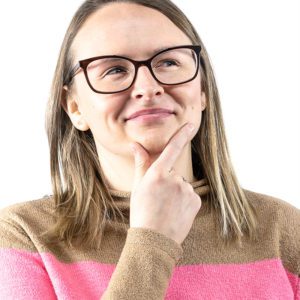
“Content is King.” We’ve all heard this phrase. It became the mantra of savvy marketers sometime in the neighborhood of 8 years ago, and though the phrase is now tired, the message still rings true. So you know you need content, but what does that mean? And why?
What is Content?
Once upon a time, “content” was synonymous with “a blog.” As the internet has changed and digital marketing has surpassed traditional advertising, the definition of content has shifted as well. It’s a disservice to your online presence to only think of blogs and articles when you think of content. Content includes (but is not limited to):
- Blog articles
- Website pages
- Case studies
- eBooks
- Videos
- Infographics
- Social media posts
- Podcasts
While blog articles are often at the cornerstone of a realistic and cost-effective content strategy, if blogs aren’t quite your cup of tea, you have other options to ensure you have a thriving flow of content to your audience.
Set Content Goals
One of the most critical parts of creating a content strategy is being clear from the beginning about the purpose you’re trying to achieve. Are you trying to gather organic search traffic? Do you want something to send out in your monthly newsletter? Are you looking to develop articles that your sales team can use in support of the sales process?
Content will only drive traffic if you write it intentionally to do so. Not every article will yield the same benefits, so creating a plan that achieves your goals is the best way to set yourself up for success.
SEO Benefits
SEO will help drive traffic to your website by showing specific pages of your website in search results based on the terms people are searching for.
The nitty gritty of SEO and content is beyond the scope of this article (also check out Moz’s Beginner’s Guide to SEO), however what’s important to know is that if SEO is your main goal with a content plan, your article topics need to be carefully chosen to highlight terms people are already searching for, and they need to be written a specific way to include those terms.
Google is constantly crawling your website content so it knows which pages will be most relevant to user searches, and those will show up first. It’s tough to fool Google. If your goal is to use blog content to capture search traffic, you have to give Google what it wants.
Customer Education & Sales Support
There are always things you wish your customers knew, and conversations you tire of having. Though content won’t totally solve those problems, you do have opportunities to create more educated leads for your sales staff, as well as supporting content to help answer their questions or reinforce conversations.
Customer education content or sales support content can be incredibly valuable for outbound communication. If you get lucky, it may find some long-term success in keyword rankings and search results, but it’s important to remember that the most likely content to drive inbound traffic is SEO-driven content.
Increase Your Reach
Content also gives you the freedom to explore new or specific areas of your business or customer segments without needing to shift your entire business model or rewrite your website. This could be a case study on a specific service or client industry you’d like to promote, an article targeting keywords associated with a new service offering, or articles written with a very specific target audience (or industry audience) in mind. This can be a great opportunity to try to generate some inbound traffic to a niche or new service line without disrupting your larger marketing plan. Again, remember that inbound traffic is only generated by content written for SEO.
What You Need for an Expert Content Plan
A content plan should be more involved than “write a blog every month.” Once you’ve established your goal, there are several key aspects you’ll need to consider when you’re coming up with your plan.
 Target Audience Persona
Target Audience Persona
Whether you’ve done an official personas exercise or not, having an idea of who your audience is and what information they’re looking for is key. If you can’t do this, you may want to take a step back and spend some time mapping out your audience personas.
You likely have several audience groups. If you’re b2b, they may be different types of positions within an organization. The information a CFO will respond to is quite different from the information a facilities manager will respond to, and the questions they’ll ask along the way will also vary. Understanding the target audience pain points and goals will help you determine the topics you’ll want to cover in your content plan.
 Keyword Research
Keyword Research
We mentioned keywords above, but this is another area that is sometimes different than what people think.
Keyword research involves identifying the search terms that people are already using (this distinction is important – you cannot generate interest with SEO, you can only capitalize on what people are already looking for), and weighing that search volume against the level of difficulty, which impacts the cost for PPC ads or the likelihood of showing up at the top of the list for SEO. So a high-volume keyword that’s also highly competitive will be very difficult to rank for, whereas a middle-volume keyword that’s slightly more specific to your business will likely yield better results and ROI.
You’ll also want to weigh the relevancy of keywords to make sure people searching for those terms are looking for what you offer. Many words or phrases can be ambiguous, or relate to several types of industries. For example, “metal screens” could be about windows, filtration, privacy screens or screen doors. You may inadvertently drive irrelevant traffic to your site if you’re not careful.
Clear Goals & Measurability Plans
Content success can be difficult to measure, but it’s a lot easier if you have appropriate tracking set up. Tracking allows you to watch how many people are visiting any specific URL (such as a blog post), where they came from (paid ad, organic search, or direct navigation), how long they spent on that page, and if they did anything afterwards (bounce rate and/or conversions). Understanding what you’d like the results of any given content initiative to be will help you know what to track and determine success.
 Someone to Write/Create Your Content
Someone to Write/Create Your Content
Plans and strategy are great, but someone has to create this content. If you’re just starting out, it will likely be a lot of writing. So you need someone internally who can dedicate time on a specific schedule to make it happen, or you need to outsource it to an agency with content marketing services or a freelancer you trust to reliably deliver quality content.
How to Pull it Off
You’ve committed to developing content on a consistent basis, you know what you’re trying to achieve, you’ve done the keyword research, you understand your audience needs, you’ve aligned your expectations for success, and you’ve dedicated a person or team to create it. Now what?
Plan Your Schedule
Determine how often you can reasonably produce content. Ideally, you want at least 1 article a month going up on your blog, but depending on the size of your content team and their workload, it could be several times a week.
The important thing is that you are consistent and that you aren’t allowing your website to get stale. You should always be working on something new for Google to crawl so you’re not leaving potential traffic out in the cold.
Understand What Type of Content You Need
Not everything is best suited to a blog. You may discover that your website needs some additional pages, or certain pages need more information.
Website content is best suited for:
- Consideration phases of the buyers journey
- Sales information – specs, benefits, product/service info
- Static information – content that doesn’t change too much
- Broad information that speaks to all your audience groups
- Calls to action
Blog content is best suited for:
- Awareness phase of the buyers journey
- Positioning yourself as an expert or authority
- Education
- Timely, topical, or local content
- Niche information
It’s important to make sure you’re not confusing the two – readers don’t like being sold to on blogs, and customers don’t like encountering too much irrelevant information on a webpage. Your content plan can (and should) include webpage updates and additions you’d like to make, just make sure they don’t interrupt your article plan.
Choose Your Topics
We recommend planning content topics on a 6 month or yearly schedule to keep yourself on track and prevent panic blogs or lack of variety.
Consider what you need: Do you need additional sales support at a certain time of the year? Do you have a long sales cycle that leads people to start researching months before they’re likely to contact you? Is there seasonality to your product or service that should be considered?
Then consider your personas and keywords. Which keywords from your research yielded the best opportunity? Where is there overlap between your audience, your keywords, and your needs? Which personas are you looking to attract or which aspects of your business are you hoping to promote?
There’s no formula or science to this part. Use the information you’ve gathered to plan out your topics. Be sure each topic has a clear objective attached to it so you understand what to track and what success will look like. A sales support piece may not yield great SEO results, but your sales staff may be able to report back that their contacts mentioned reading it and it’s helping them to close sales.
Follow Up… But Don’t Get Too Eager
Content marketing is about the long game. SEO gains take time, and building up domain authority with Google doesn’t happen overnight. Make sure you’re keeping an eye on what’s working and what isn’t, but don’t lose faith if your content doesn’t yield immediate positive results.
Every audience and article is different, but for an SEO-based blog, you want to wait at least 3 months before you start assessing its success – and you may continue to see growth and gains for a year or more. Trying to assess success too early could cause you to feel that something isn’t working when in fact it just needs more time. Stick with your plan, and try not to make major adjustments unless you’re 100% sure they’re warranted.
Let’s Get Ready For Content!
You’re ready to create your own content plan. Go forth and conquer! And if anything above felt a little overwhelming or you’re still not sure how to start, go ahead and fill out our contact form.
